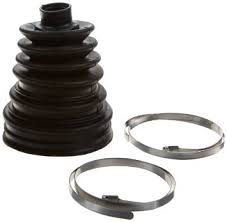Lets start down your list.
I'm assuming that your are referring to the rubber thing. This is a strut mount, not the strut mount bearing. The bearing is located between the spring and strut mount. Strut mounts just prevent noise and have no direct way affect safety. I don't believe that these would be picked on during a safety inspection. Of the list these are by far the hardest to replace. The strut plates bolt to the strut and capture the spring and bearing palate between them. After the strut, spring and plate assembly is removed the spring needs compressed before unbolting the plate from the strut. Do not unbolt it without capturing the spring or bad things will happen. If you choose to replace the plates then replace the struts and bearings as well, they are already removed by this point. Make sure to get an alignment after replacing them.

The tierod connect the steering to the suspicion knuckle. If this part breaks you lose steering. The tierod is a ball and socket joint. A normal mode of failure is the socket wearing out. This will make the joint loose. When the socket is sufficiently worn out the tierod can fall off. This will definitely get flagged on a safety inspection. On your list this is the easiest thing to replace. Adjust it as close to the old one as you can. Get an alignment afterwards.
You are correct that is the inner CV boot. If the boot is torn then there is probably dirt that has made it's way into the joint. The joint will wear and start making noise. Eventually the joint will break but the radio would have to be quite loud before it does. It's far more reliable and easier to replace the whole axle not just the boot. There is a 50/50 chance if the inspector will complain. This is of medium difficulty to replace. Fist remove the nut holding the axle into the knuckle. Next slide the axle out of the knuckle, this will involve either disconnecting the strut or separating the lower ball joint. Next the axle needs to be pull out of the transmission. The axle is held in with a spring clip inside the transmission and need gently pried out. Turn the axle 15 to 30 degrees every time a prying attempt fails.







